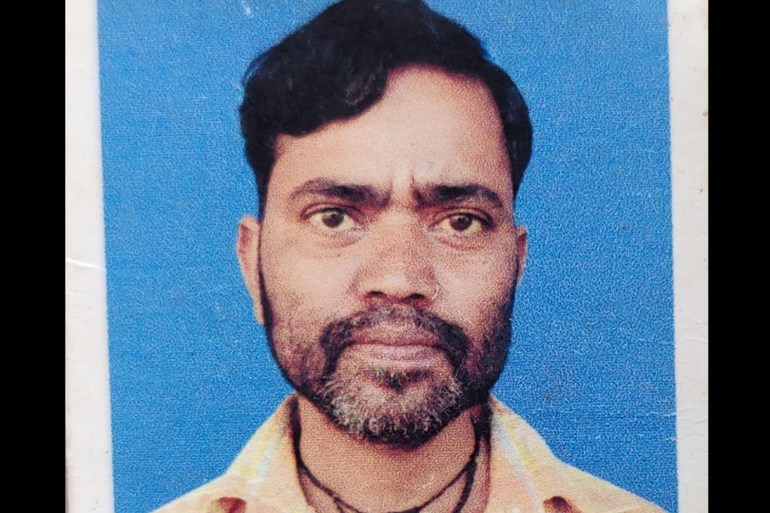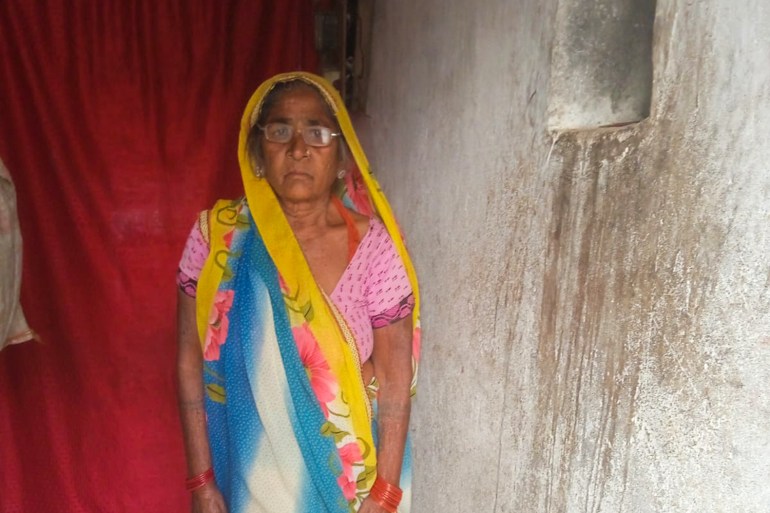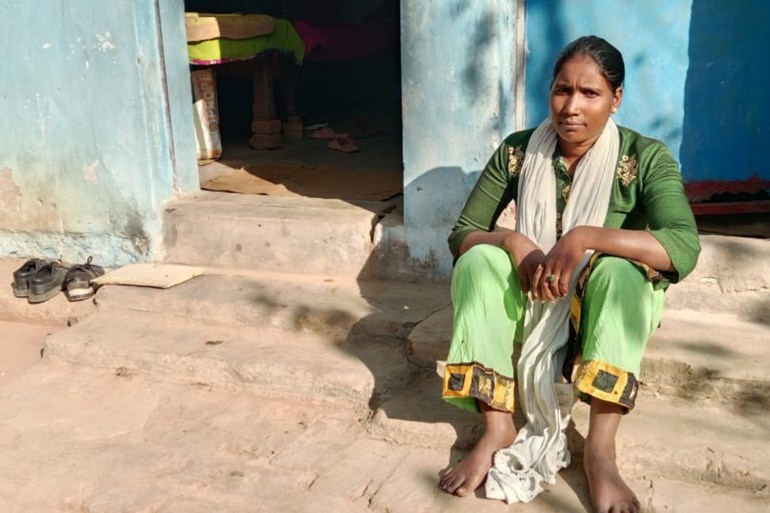Mumbai, India – In the hours after Prime Minister Narendra Modi made a shock announcement making 86 percent of India’s currency notes invalid on November 8, 2016, Mujammil Khan’s life changed at a pace he could not keep up with.
Overnight, Khan’s livelihood as an autorickshaw driver in Uttar Pradesh’s Kasganj district dried up as people had no money to pay him, leaving him struggling to feed his wife and four children, the youngest being only four.
So, Khan, 39, did what everyone in the country did in the aftermath of the decision – queue up outside banks and ATMs to exchange his invalid currency notes for new ones. But ATMs were mostly shut for weeks and banks had no new notes to offer – calculations showed that while 21 billion currency notes had to be replaced, government printing presses were able to print only up to three billion notes a month.
“Bahut bheed-bhaad hoti thi [It used to be crowded and chaotic],” Khan’s wife Khushnuma Begum told Al Jazeera, explaining the hardship as peoppe jostled with each other, often sparking off fights and disputes, in the queues outside banks and ATMs.
For two days, Khan queued for hours. But before he could withdraw, the ATM would run out of money. Khan went again, the third time. Two hours after he queued up, he collapsed on the ground and was rushed to a hospital. But he did not survive.

Khan was not alone.
Millions like him had no option but to suspend their lives and queue up outside banks and ATMs to exchange their old currency notes for new ones.
‘Couldn’t Modi have given us more time?’
Across India, tens of people reportedly died in the days after Modi’s shock announcement. The data around the total deaths are unclear – opposition politicians put it at over 100, media reports pegged it at around 80, while the Modi government, after first denying such deaths, admitted to only four.
Sad. Atleast 105 people have now died due to #DeMonetisation Here is a list compiled by State/Name/Cause of Death pic.twitter.com/LX9Xa8IXIE
— Derek O’Brien | Derek O’Brien (@derekobrienmp) December 22, 2016
Many, like Khan, collapsed while waiting in serpentine queues. Many others reportedly took their own lives out of sheer desperation after facing harassment for not being able to pay back their debts. Even bank employees died, ostensibly due to the stress of working round-the-clock, after the announcement.
Last week, six years after those horrifying days, these memories came alive for many, including Begum.
The Supreme Court of India, hearing 58 petitions challenging the Modi government’s decision to demonetise high-denomination currency notes overnight, upheld the move and said it could not be called “unreasonable”. Referring to the hardships that millions faced during the period, the top court said the contention that the decision should be set aside due to these hardships “will hold no water”.
“The individual interests must yield to the larger public interest sought to be achieved by impugned notification,” the court said in its majority judgment.
For Modi’s Bharatiya Janata Party (BJP), which faced a torrent of criticism after the move, the court’s ruling is a vindication. BJP spokesman Gopal Krishna Agarwal admitted that people faced hardship, but defended the move, saying it “dealt a big blow” to the illicit money economy.
“We have full sympathy for all those who suffered due to demonetisation but the court has very clearly said that in any decision, (some) people will have hardship, but that doesn’t mean the decision was bad,” he told Al Jazeera.
But critics disagree. Political analyst and author Sanjay Jha said he was “disappointed” with the top court’s verdict.
“The fundamental question on demonetisation was: did it achieve its aims for which the entire country went through a terrible ordeal and human suffering reached stratospheric high? The court ought to have at least mentioned that it was a failure,” Jha told Al Jazeera, adding that the government’s failure to share accurate data around deaths during the period was “a shame”.
The move to demonetise the bulk of India’s currency caused widespread distress to the lives of millions of Indians. More than 500,000 companies have shut shop since, at least five million jobs were lost between 2016 and 2018, agricultural trade collapsed, and farmers were forced to dump their produce on the streets after demand slumped.
The crisis hit many homes deeply in a way that they have still not recovered. For Begum, yielding their interests to the larger public interest has meant letting go of every dream she and her husband held on to for years.
“The court should have come and seen how people’s lives have been altered by that decision (demonetisation),” Begum told Al Jazeera. “How could the court uphold such a move?”
Forced to transform herself into the family’s breadwinner, Begum took to zari work, a type of hand embroidery on apparel. But that paid her a meagre daily wage of 50 Indian rupees ($0.6). So she pulled out her children from school. Taufiq, her second son, now works at a roadside food stall, earning as much as his mother.
Begum said it hurts to see how that moment, of Khan’s death, upturned her life. “Couldn’t Modi have given us more time after announcing the move?” she asked.
“My husband and I had dreamed of educating our children well,” she said over a patchy video call from her home in Kasganj. “But when there’s not enough to even feed ourselves, how do I send them back to school?”
Nearly 800km (498 miles) southeast of Kasganj, another family continues to grieve their loss six years after.
Ramchandra Paswan, a 64-year-old former miner, was not able to withdraw his pension from the nearby State Bank of India branch of Mohammadganj in the Garhwa district of Jharkhand state.

Paswan’s granddaughter was getting married in the next few weeks and expenses were mounting.
“He went there repeatedly but each time the queues were so long that he would wait for hours and return home empty-handed,” said his daughter-in-law Usha Devi.
On November 16, 2016, after hours of standing in the queue outside the bank, Paswan collapsed. Before the family could reach there, he was dead. His family said he was healthy and without any underlying medical conditions.
“We had hurried her wedding up only because it was his dream to see her married off,” said Devi. His death pushed the wedding off by a few months.
In his death, the family, dependent on casual labour in and around the village, also lost a significant source of income – Paswan’s pension.

In the mercantile city of Surat in western India’s Gujarat state, 33-year-old Rahul Pandey shakes up in anger each time he thinks of his days following Modi’s announcement.
For Pandey, who transports diamonds for a living as a migrant worker in Surat, demonetisation came along with a family emergency – his mother being diagnosed with a potentially fatal heart condition.
Over the years, Pandey had saved up about 60,000 rupees ($850) in his bank account for such emergencies. But withdrawing his own money was a task tougher than he had imagined.
“Every day, I would wake up and head straight to the bank and queue up outside the branch,” said Pandey, “only for the bank officials to come out a few hours later and tell us that they had run out of currency notes.”
How can a decision that put us through such suffering be a valid decision?
It did not help that the Modi government imposed a maze of bureaucratic restrictions on withdrawals – citizens could, initially, exchange old notes up to 4,000 rupees ($49) at a time but they could withdraw only 2,000 rupees ($25) from banks and ATMs in a day.
His mother needed to undergo surgery urgently, the doctors told the family. And Pandey’s financial health grew precarious as he kept missing work since he had to queue up outside banks all day.
Pandey grew desperate and started sleeping on the street outside the bank to get a headstart when they reopen in the morning. Even that did not help.
“I wasn’t alone. There were a few hundred people before me in the queue, already, camped outside the bank through the night,” he told Al Jazeera.
After 16 days of agonising wait in the queues, Pandey managed to withdraw 2,000 rupees. The family was forced to sell off their livestock in a distress sale to raise funds for his mother’s treatment.
“I would hear Modi say that rich and poor alike were suffering,” Pandey said. “But while we queued up and lived a life worse than a dog’s, I saw the rich walk into the banks and getting their monies out within minutes.”
For Pandey, the top court’s decision felt like an insult to add to an injury that hasn’t healed. “How can a decision that put us through such suffering be a valid decision?” he asked. “Maybe the Supreme Court was not aware of what we went through, or else they would never dismiss our suffering.”

‘Derailed India’s economy’
Across India, numerous families saw their lives shattered and their dreams crushed. Even though the hardships it caused were clear, what is not clear, say experts, is how demonetisation helped the country’s economy.
The country’s growth slumped right after demonetisation, prominent development economist Jean Dreze told Al Jazeera.
“Demonetisation derailed the Indian economy from its high-growth path and it is yet to return there,” he said, with evidence indicating the exercise lowered India’s gross domestic product (GDP) growth rate by at least two percentage points.
The Modi government also repeatedly said the move would help India move towards a “cashless economy”, but the latest data from India’s Reserve Bank of India showed that there was now 83 percent more cash in circulation than in November 2016.
The government also claimed that demonetisation was a “key step” to formalise the Indian economy. But an assistant professor at New Delhi’s Institute for Studies in Industrial Development, Sangeeta Ghosh, added a caveat.
“The move crippled India’s micro small and medium enterprises, that not only are India’s industrial backbone but also a means of livelihood generation for a vast number of people in the country,” she said.
“The withdrawal of 86 percent of currency left the cash dependent MSMEs (micro, small and medium enterprises) paralysed without any means of transaction. The formalisation that the Indian economy might be witnessing is on account of a shrinkage of the informal economy.”
Utterly gobsmacked at these six words in the demonetisation judgment. pic.twitter.com/DefY6MslJw
— Gautam Bhatia (@gautambhatia88) January 2, 2023
For 30-year-old Poonam Kumari, a resident of Nawada in Jharkhand’s Garhwa district, the weeks after demonetisation were traumatising.
Kumari, a single mother of two boys, works with a local NGO and earns about 2,000 rupees each month. Seeing the queues and the chaos outside banks, she was relieved she had with her cash reserves equivalent to her earnings for three months.
“For the first few days, people accepted the old notes so I kept using them,” she said. But soon after, when businesses stopped accepting the banned notes, Kumari had no money left to eat or feed her boys, aged six and four.
She went to the bank repeatedly to exchange the notes but did not get the new ones. Time was running out – the government had given citizens only 50 days to swap their demonetised notes for the new ones.
Desperate, she gave it to another villager who promised to get the notes exchanged for her. “He tried for a while and gave up,” said Kumari.
The deadline passed. Kumari then did something she never thought she would have to. Despite living on borrowed money and food rations, she set currency notes worth 6,000 rupees ($73) on fire.
Within seconds, the money she had painstakingly earned after three months of work turned into ash.


